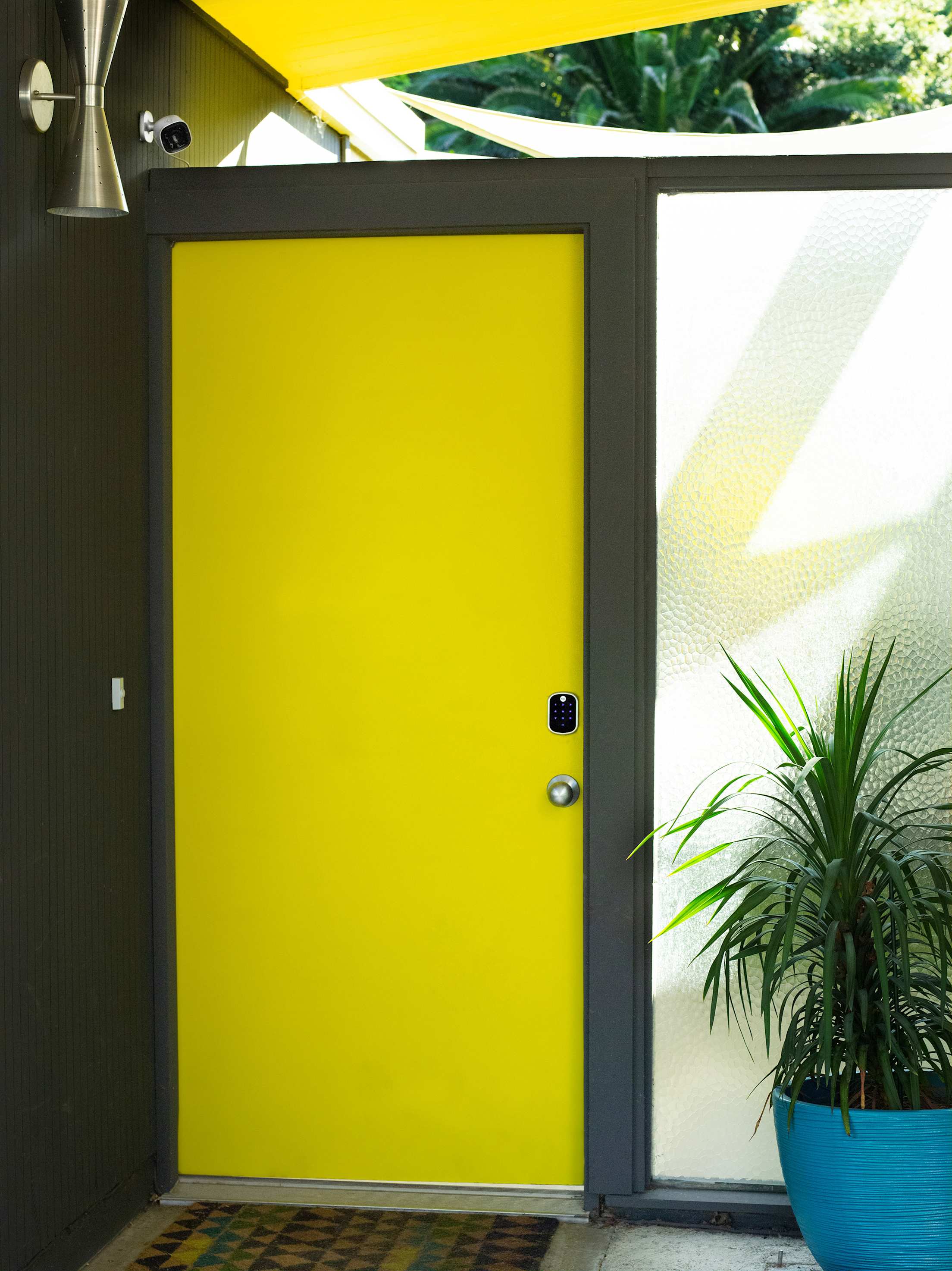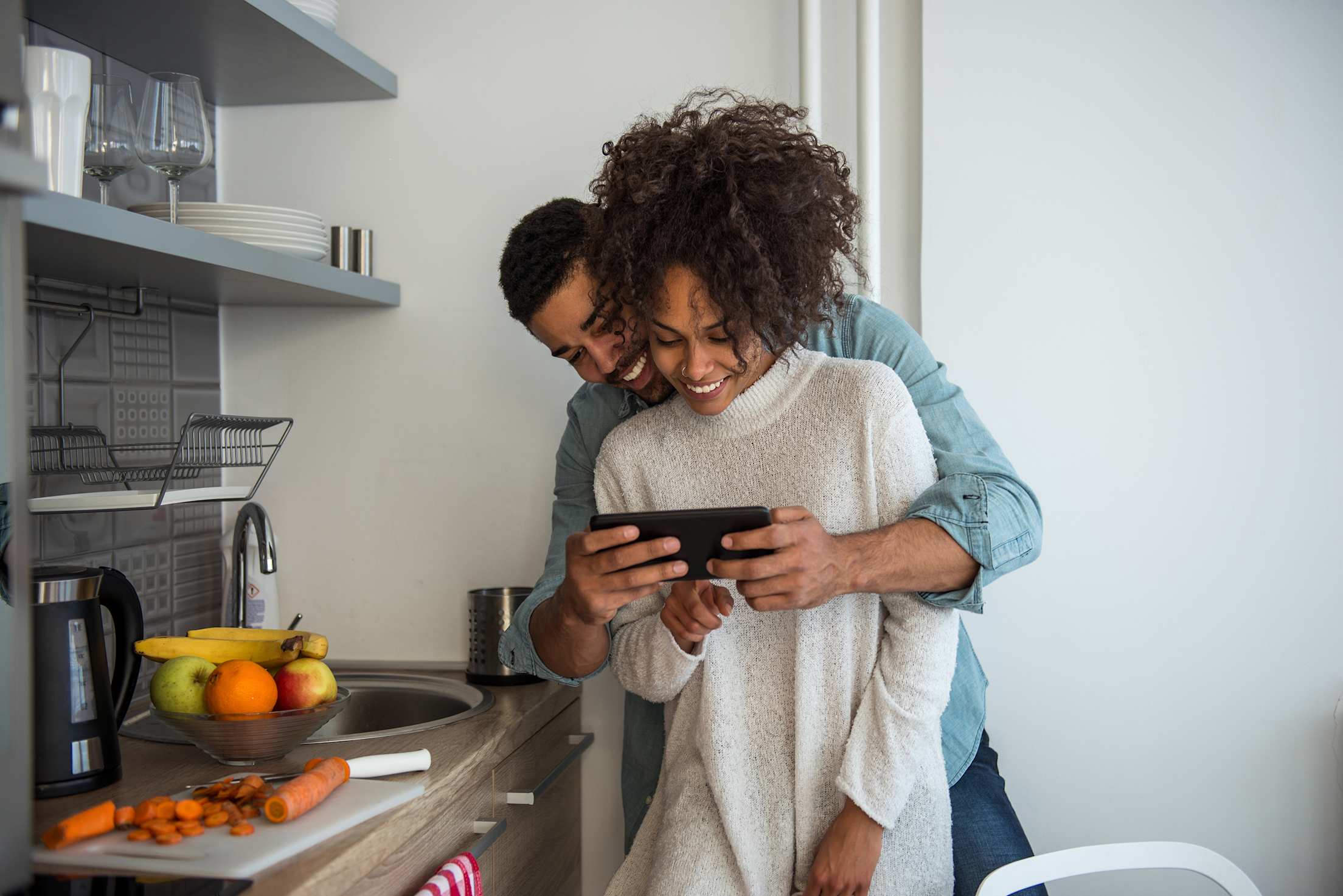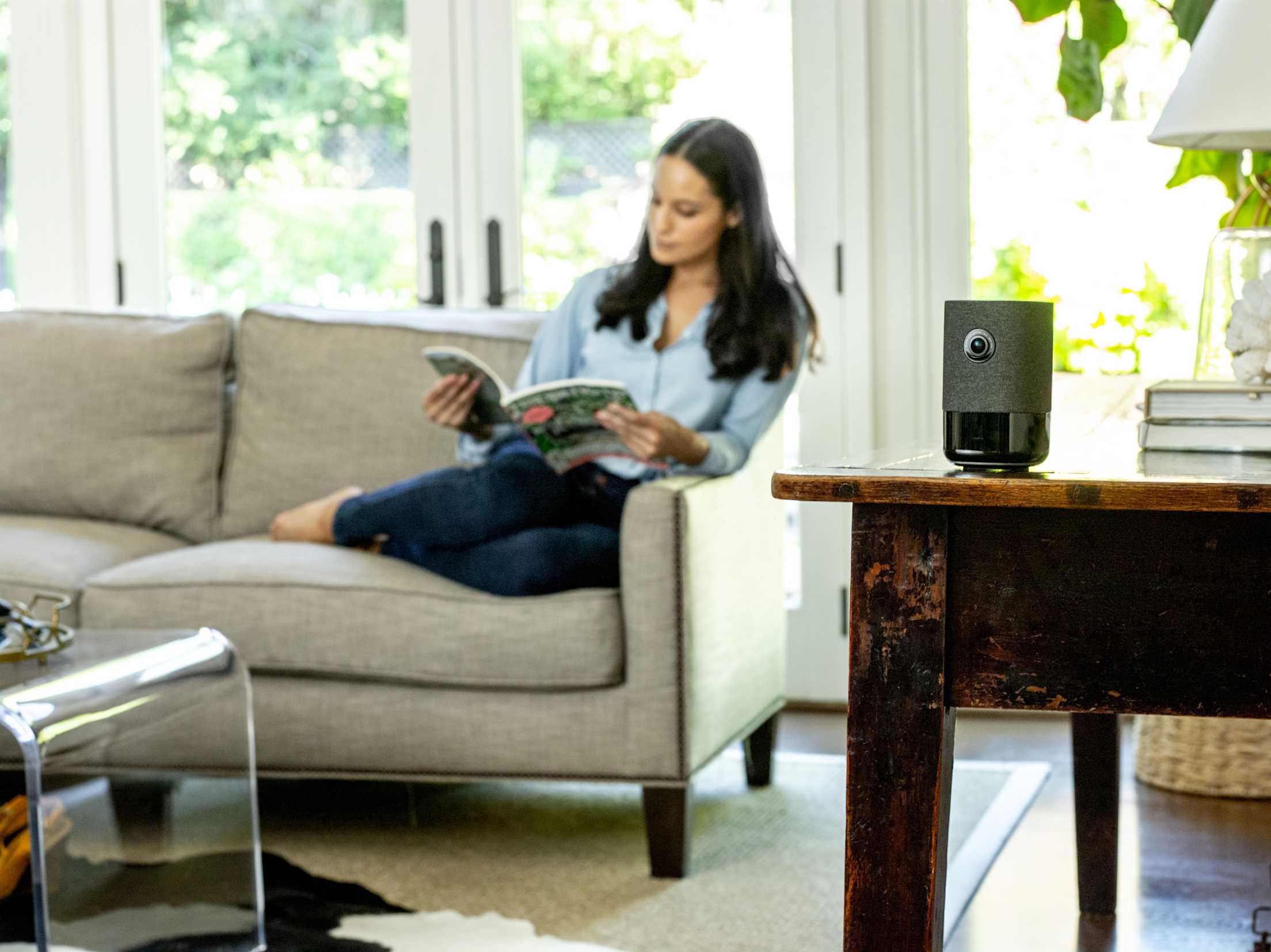
Everything You Need to Know About Setting Up a Smart Home
Building a smart home can start with a single bulb or switch.

Automated homes are no longer the domain of science fiction. And now that smart technology is becoming mainstream, smart home devices are cheaper and easier to use than ever. There are more than 60 million connected homes in the U.S., meaning nearly half of all families interact with a smart home device every month. It might seem like complicated, mechanical wizardry, but starting to build your smart home can be as unassuming as adding a single light bulb to your abode. So what exactly is a connected home and what are the best smart home devices? We have you covered.
What is a smart home?
A smart or connected home includes any combination of household devices, fixtures, appliances, entertainment, and security systems that communicate over the internet and can be controlled remotely using a smartphone, computer, voice activation, or other interface. These devices are what’s known as a part of the “Internet of Things,” a term for everyday products that can connect to and be controlled by the internet.
Real estate companies have a more specific definition of a connected home. Coldwell Banker, for example, says the home must have a smart security system that either controls access (such as a smart lock) or monitors the property (such as a security camera), or that it must have a smart temperature feature (such as a thermostat). In addition to that, a connected home has two or more smart devices, which could include appliances (e.g. a smart fridge), entertainment systems (smart TV), heating or cooling systems (smart fans), lighting (smart bulbs or automated lighting), outdoor systems (smart sprinklers), or safety features (smart fire detectors).
The software or hardware that bridges and connects all of this is called a “hub.” Hubs, such as Samsung SmartThings Station, are small devices that log all of the devices in your home and synchronize your ability to control them via smartphone app, voice activated systems (such as Alexa), or an entertainment system (such as Apple TV). Think of a hub like the “brain” of your home system.

What types of devices are there?
There are thousands of different smart devices, but the main categories are:
- Security devices, which help monitor and protect your home, including everything from security sensors for windows to door locks to security cameras. These devices send push alerts to your phone or tablet if security is breached, allow you to check the status of your property remotely, and more.
- Household smart tech, which replace your everyday home essentials such as thermostats, lights, washer/dryers, and even plugs. Many of these devices help reduce energy expenditures, remember your preferred settings, and can be operated remotely using an app.
- Entertainment and media, such as smart televisions and speakers. These devices do more than stream movies or play music. Some can also act as master remotes for other devices around the home thanks to embedded digital assistants.
- Digital assistants, such as Alexa or Google Home, which help manage things around the home. They come embedded in devices, such as smart speakers, or can be accessed from your phone. Ask it to turn off lights in a particular room, create a shopping list, answer burning questions, place a phone call, or lock a smart door.

How do I set up a smart home?
A quick search online will show many individual products as well as entire connected home “ecosystems," devices that are compatible with a single manufacturer—such as Google Home or Apple HomeKit—and communicate and work in concert with each other.
The best way to get started is to ask yourself, “What is a simple need my household has?" and start there. Research products that solve a clear problem—keeping an eye on the security of your backyard or saving on home energy bills, for example. In these cases, you might purchase a smart security camera that sends live video to an app on your phone, or you might opt for a smart thermostat that “learns” your preferred temperatures throughout the day and works to cut down on your energy expenditures each month.
Alternatively, if you’re not sure you want to commit to a whole system for your house, you might opt for a single product that doesn’t require professional installation, such as smart lights that turn on when you enter a room.
If you’re happy with that initial smart home gadget, you can buy another that connects to it and enhances the service.
How much does a connected or smart home cost?
The average cost of a full smart home is $928 on average. However, many individual products are available for much less. For example, a smart thermostat typically costs around $200 to $500 per device, plus between $100-300 for professional installation, and a small monthly fee.
A simple smart speaker, a wireless speaker with a built-in voice assistant such as Amazon Echo or Google Home, on the other hand, may cost as little as $20-40 in addition to an annual subscription fee. A smart plug, which lets you remotely control on-off switches for any device, runs as low as $8.
“When thinking about your smart home budget, consider what level of reliability and cybersecurity you want,” says Jessica Cahill, director of product marketing for AAA Smart Home Security. “More secure devices will cost more, but it is generally worth the extra expense.”

What features should I look for?
First, everything must be compatible. If not, your devices won’t work in harmony. The good news is that many popular devices sync with multiple ecosystems, such as Amazon Alexa, Google Assistant, and Samsung SmartThings. When you’re buying new smart home gear, check the product’s website.
As far as what particular devices to buy, look for something that solves a clear need, makes your day easier, and integrates seamlessly with your lifestyle. Pick something you’ll regularly use.
For example, if you are hoping to reduce your energy use, smart thermostats or automated lighting systems can learn your schedule and activate when they sense that you’re at home, which can help you cut down on energy bills. Shade controls, which allow you to lower or raise shades with the simple click of an app, are also popular for cutting down on the cost of cooling and heating homes—plus, they can be set to a particular schedule so that when you’re away on vacation it looks like someone is home.
If you have children, look into systems that offer family accounts. In that case, you can assign specific passcodes and security levels to family members, friends, or hired help, which allow or limit access to certain devices or parts of the home.
Another benefit to families: Smart homes can help you keep track of your family members. For example, smart systems might alert you when your child uses their smartphone or their special code to open the front door or are detected on a security camera, so you know that they’ve safely arrived home from school.
Professionally installed devices can also add value to your home if you plan on selling it within the next few years.
“While installing smart home products yourself may save a few bucks, there are a lot of advantages to opting for a professional installation,” Cahill says. “Professional installers are experts in home security and automation, and they can create a customized smart home system that works together properly and protects your home from security vulnerabilities so that you feel safe and secure.”

Should I be worried about security issues or hacking?
Concerns about hacking are legitimate: Anything that connects to the internet can be hacked. Many people buy connected home products, such as security cameras and smart locks, because they’re concerned about safety. Your home protection device shouldn’t be what lets strangers burgle your home or leaks your data to nefarious outsiders.
Dawn Song, professor of electrical engineering and computer science at UC Berkeley, has published research showing that a variety of smart locks were vulnerable to at least one of the hacks her team attempted. In the past several years, her team has repeatedly demonstrated that AI learning systems can still easily be fooled and manipulated. “There are still open challenges in ensuring security and privacy for connected home products,” she says.
How do I prevent my smart home and other devices from being hacked?
Back to the ecosystem comparison: If one part fails, the rest will collapse. Your system is only as good as its weakest link. Hackers look for easy entry points: All it takes is one device to compromise the entire system.
There are a few easy steps to stay secure:
- Only install products that encrypt your data when it’s stored or transferred, including if it’s sent to the cloud or as it travels to an app on your phone.
- Wi-Fi networks should be private and set with a secure passcode to prevent would-be hackers from hopping on your connection. Routers are among the top ways that hackers steal information or gain access to smart home devices. Replace your router whenever it’s old enough that firmware updates are no longer supported (approximately every 3 to 5 years). Get a router that can manage two separate wi-fi networks: One for your personal computing devices, such as laptops and smartphones, and a second for your smart devices. That way, a compromised smart device won’t let hackers access personal data from your emails, shopping history, and banking apps.
- Make sure that any installations of security cameras, door locks, and thermostats are done by a reputable professional.
- Keep all products running on the latest software with frequent updates. Many products from top brands, such as Amazon and Google, install security updates automatically.
- Change all default usernames and passwords immediately upon set-up of a new device, and make sure that they are all different for each device. A secure online password manager can help you generate strong passwords (ideally more than 16 letters and characters long) and help you keep them all straight. Cahill also recommends regularly changing your passwords for added security.
- Use two-factor authentication, if it is available.
Though a smart home can take time and research to set up properly, it can be well worth it. Not only can it be an investment in your home, but it can ultimately help make your day more efficient, secure your property, and save you money.
AAA Members save up to $60 per year on AAA Smart Home Security Monitoring.